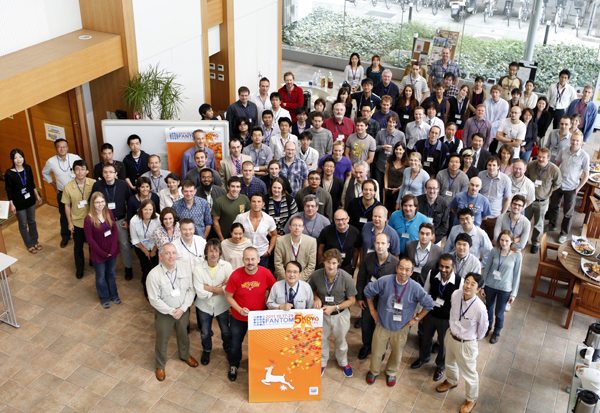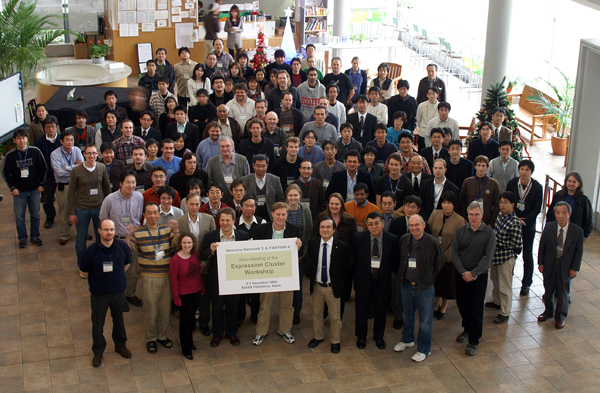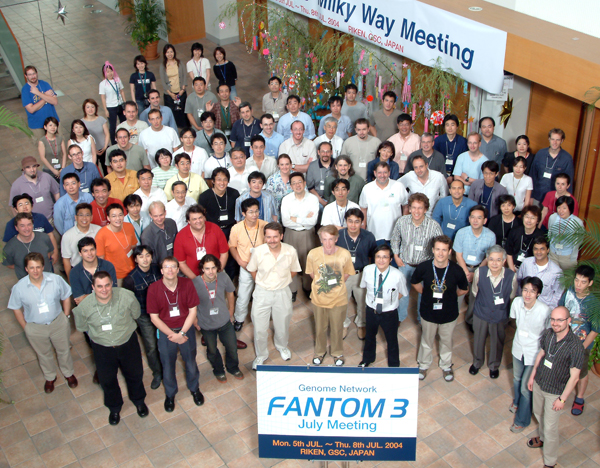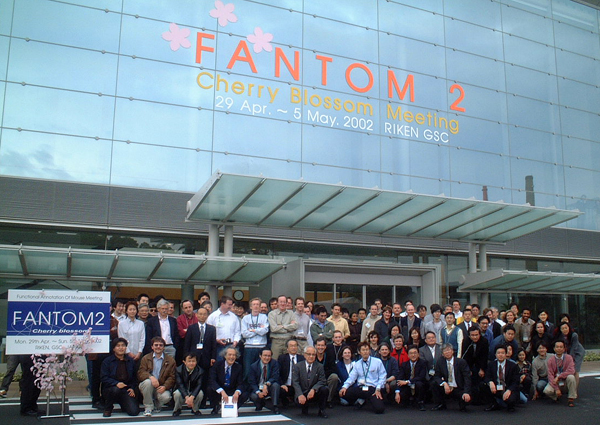FANTOM5
The FANTOM5 project is built on our previous experiences in FANTOM3 and 4. In FANTOM3 Cap Analysis of Gene Expression of RNA from various mouse tissues was used to build up a picture of mammalian promoters in terms of tissue restriction, conservation and structure (FANTOM3 Papers). In FANTOM4 we focused our study on a single cellular model and followed the differentiation of THP-1 cells from a monoblastic suspension culture phenotype to an attached monocytic phenotype (FANTOM4 Papers). With this we built a transcriptional network model that identified putative key factors responsible for maintaining the two end states and for regulating state transition.
In FANTOM5 we are expanding the efforts made in FANTOM3 and 4 and aim to generate both a map of the majority of human promoters and comparative transcriptional regulatory network models of each cellular state. To achieve this we are carrying out deepCAGE sequencing on the Heliscope true single molecule sequencer on RNA isolated from every major human organ, over 200 cancer cell lines, 30 time courses of cellular differentiation, mouse developmental time courses and over 200 primary cell types.
FANTOM4
FANTOM4 used deepCAGE to monitor the dynamics of transcription start site (TSS) usage during a time course of monocytic differentiation. The expression levels from each promoter and transcription factor binding site predictions were then used to build a transcriptional regulatory network model (Suzuki et al. 2009). Additionally, transcription intitiation RNAs, the expression of the 'repeatome' and at atlas of combinatorial TF regulation were published in FANTOM4.
FANTOM3
FANTOM consortium utilized a new technology, CAGE, to reveal that more than 63% of the genome — instead of the known ~1.5% fraction of protein coding exons — is transcribed as RNA. We also confirmed the existence of over 23,000 non-coding RNAs (ncRNAs) and that >73% of the transcriptional units show sense-antisense transcription. This work was published in a couple of papers in the “RNA special issue” of Science in 2005 (Carninci et al. 2005; Katayama et al. 2005)
FANTOM2
During the second phase of the FANTOM activities, we determined the base sequences and assigned functional annotations to a set of 60,770 full-length mouse cDNAs. This was the first project worldwide to standardize full-length mammalian cDNAs. The research was published in a special issue of Nature on the decoding of the mouse genome in 2002 (Okazaki et al. 2002)
FANTOM1
The consortium developed an effective system for functional gene annotation by designing appropriate rules and methods. The result was mainly published in Nature in 2001(Kawai et al. 2001). The paper was followed by the draft sequence of human genome (Lander et al. 2001) week later because they used our cDNA for gene number prediction.





